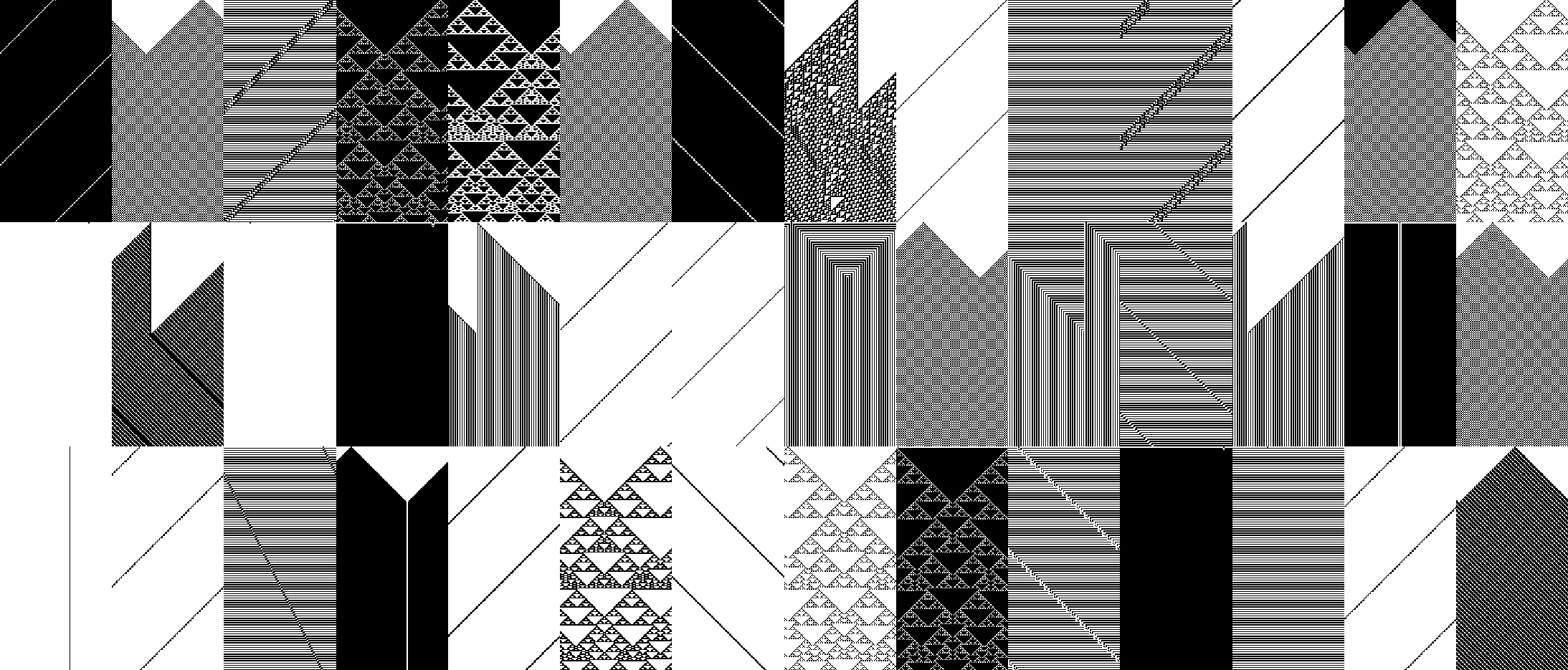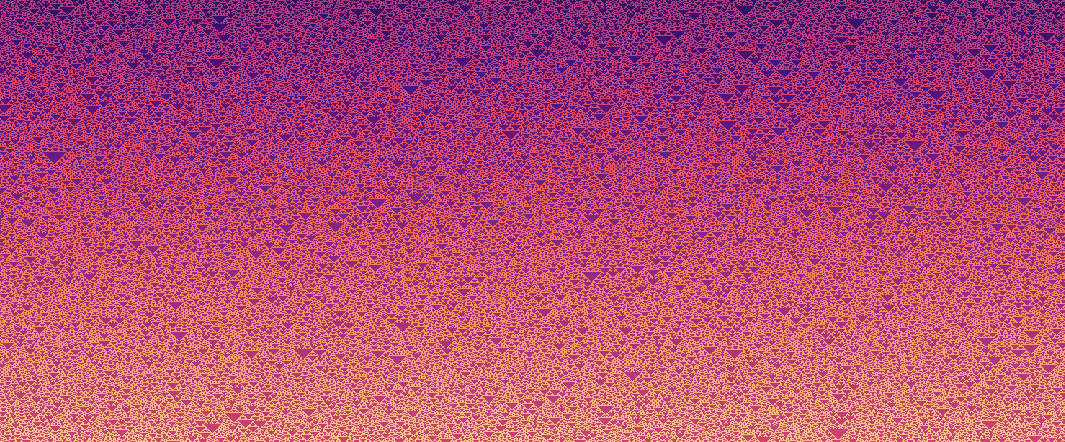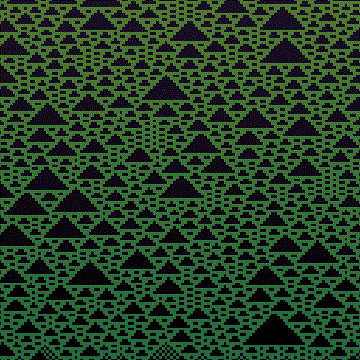Cellular art-omata
 Cellular art-omata, or cellular automata as they usually are called, demonstrate how simple mathematical rules can lead to astonishing complexity.
Cellular art-omata, or cellular automata as they usually are called, demonstrate how simple mathematical rules can lead to astonishing complexity.
A automaton is a collections of cells on a grid of a specific dimension and shape, where each cells is assigned or ‘colored’ into a finite number of states, usually two. The automaton then evolves through a number of discrete time steps according to a set of fixed rules based on the states of neighboring cells. A simple rule could be that if your right neighbor is colored, then you will copy its color. However, rules can be more complicated, fore more details read here. Cellular automata can and have been used to simulate a variety of real-world systems, including biological and chemical ones. Here I’m using them to generate cool-looking art.
The top figure shows the dynamics of multiple automata merged together into a 3x14 grid. This uses the classical two state dynamics where each cell can only assume one of 2 states, 0 - white, or 1 - black.
Adding some color

We can also do something else, we can add color. This can be done i a lot of ways, the simplest is to add a simple gradient to the automata. I.e the state of a cell is still contingent one the state of its neighbors and some pre-defined rules, we just choose to offset the states with a constant that increases according to distance from the top row.
Adding some movement

We can also let the dynamics run over a longer timespan and capture snapshots as it changes, merging these into a gif ![]()
